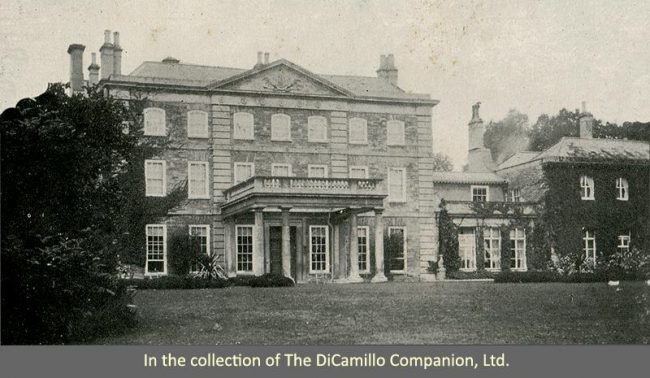
The House from an early 20th century postcard
Built / Designed For: Mark Antonie
House & Family History: Henry Mond, 2nd Baron Melchett (1898-1949), sold Colworth House to Unilever in 1947. The multinational consumer company setup a large research laboratory in the House, as well as erecting several research buildings on the grounds (at its height in the 1970s the complex employed approximately 1,800 people). In 2004 Unilever began the process of turning Colworth Science Park into a science cluster facility, with the goal of attracting science businesses, academic institutions, and science-based entrepreneurs as part of a broad-based science campus, with Unilever as one of the primary tenants (Colworth remains one of Unilever's six research centers, with around 750 employees). Colworth House gave its name to the Colworth Medal, established in 1963 by the late Professor Tony James of Unilever Research and Professor Henry Arnstein of the Biochemical Society. The medal recognizes outstanding research by a young biochemist of any nationality who carried out the majority of their work in the United Kingdom.
Garden & Outbuildings: The Colworth House grounds were the location of a Channel 4 "Time Team" television program (broadcast on February 22, 2009), which resulted in the discovery of a Roman villa and farm in a field adjacent to the House.
Architect: Samuel William Reynolds
Date: 1810-11
Title: Biographical Dictionary of British Architects, 1600-1840, A - HARDBACK
Author: Colvin, Howard
Year Published: 2008
Reference: pgs. 859, 1150
Publisher: New Haven: Yale University Press
ISBN: 9780300125085
Book Type: Hardback
House Listed: Grade II*
Park Listed: Not Listed
Past Seat / Home of: Mark Antonie, 18th century. William Lee, 18th century. Henry Mond, 2nd Baron Melchett, 20th century.
Current Ownership Type: Corporation
Primary Current Ownership Use: Other
Ownership Details: Today Colworth Science Park, one of Unilever's research centers.
House Open to Public: No
Phone: 01234-867-000
Email: [email protected]
Website: http://www.colworthpark.com
Historic Houses Member: No